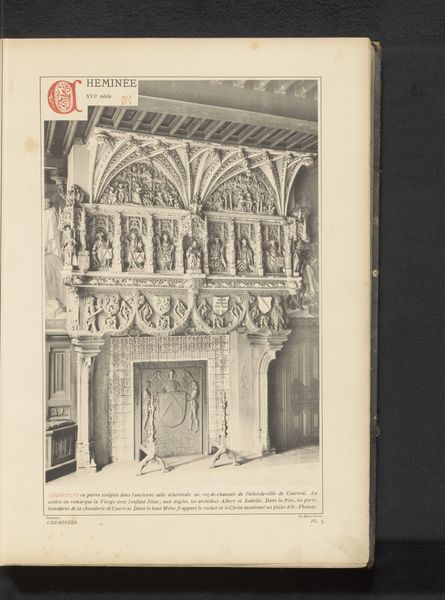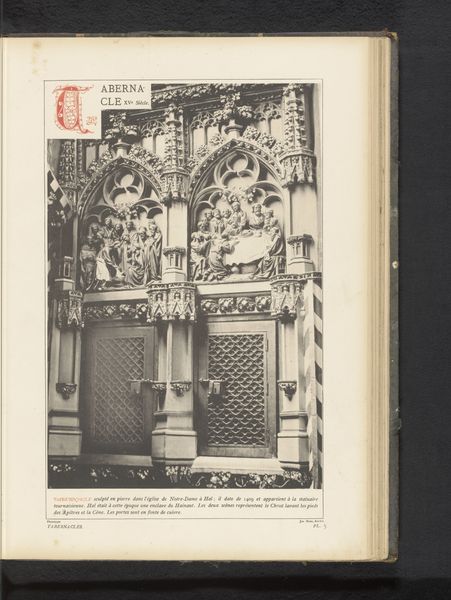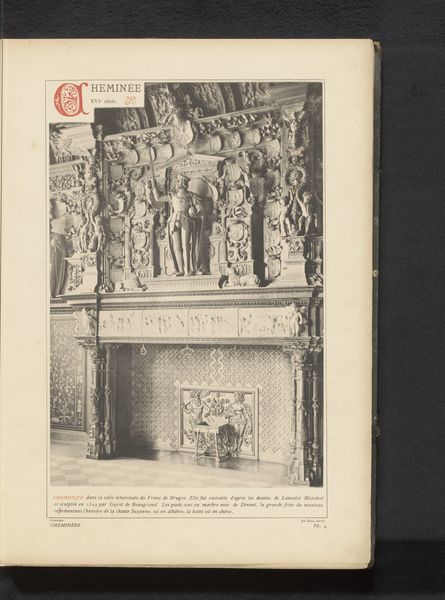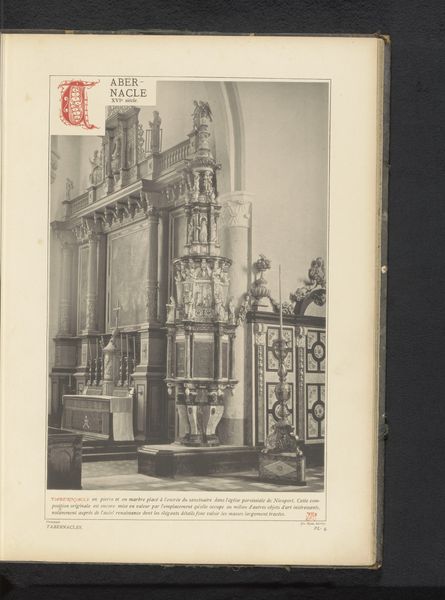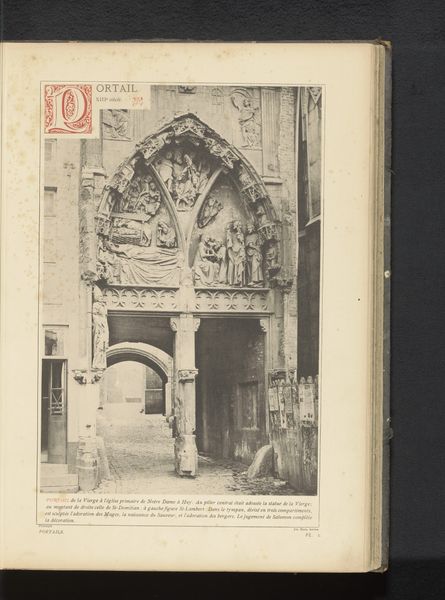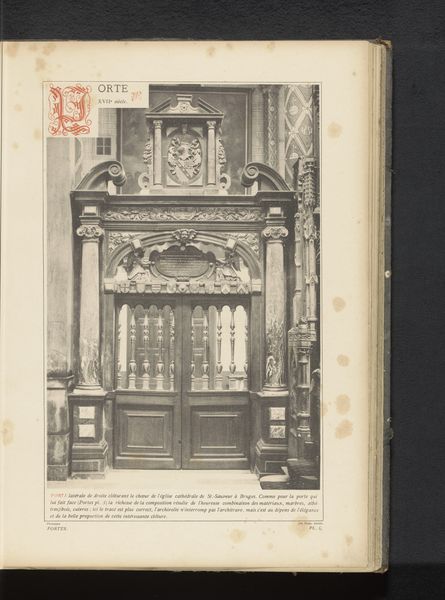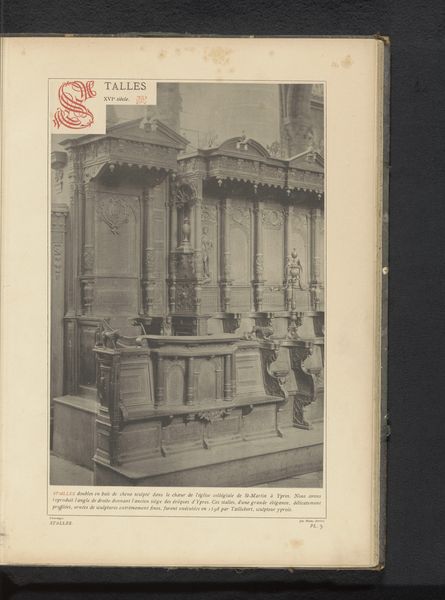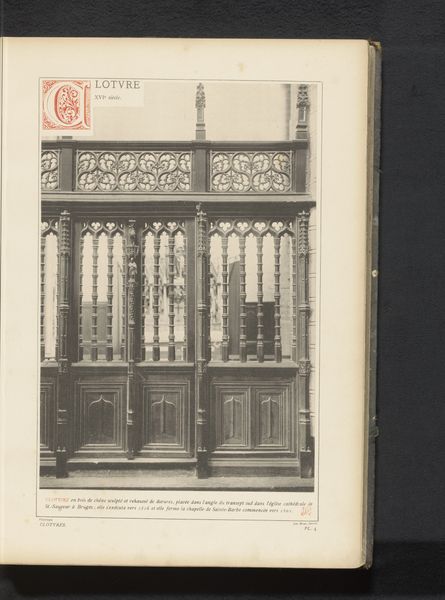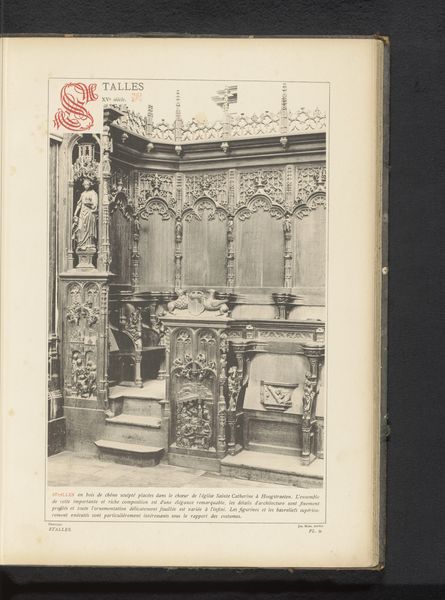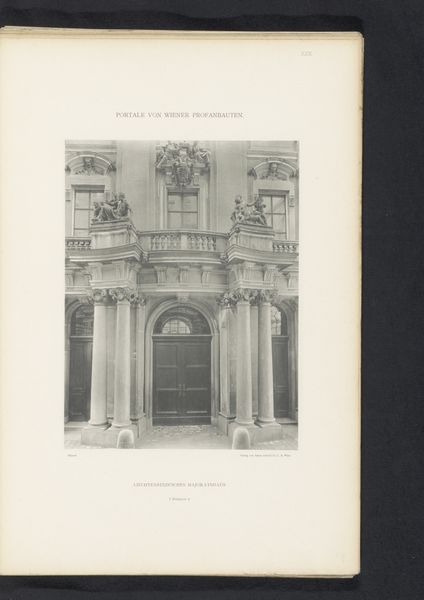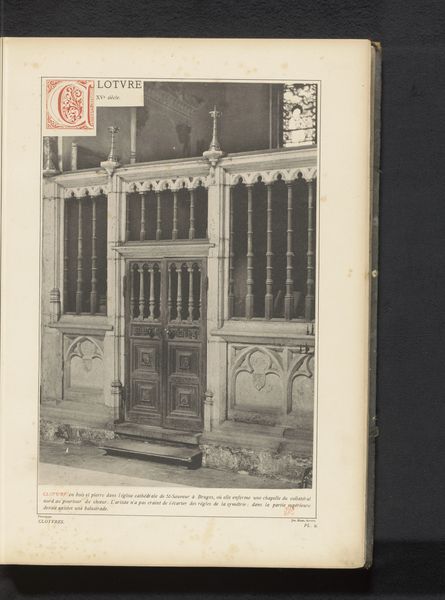
Schoorsteenmantel in de volkskamer op de begane grond van het stadhuis van Oudenaarde, België before 1887
0:00
0:00
print, architecture
#
medieval
# print
#
architecture
Dimensions: height 340 mm, width 229 mm
Copyright: Rijks Museum: Open Domain
Editor: This image shows a print of the Schoorsteenmantel, or mantelpiece, in the volkskamer of the Oudenaarde Town Hall in Belgium, dating back to before 1887. It feels so imposing! All of those intricate details, those vertical lines pointing upward, that almost Gothic style... What elements do you notice? Curator: The structure compels attention, doesn't it? Observe how the composition orchestrates a dialogue between line and mass. The photograph documents architectural construction of an elaborate fireplace. Focus on the verticality of its design. Do you perceive how it almost defies its own weight? Editor: It does, especially with the intricate openwork near the top. It's as if the stone is barely there, almost like lace. Curator: Precisely. This brings up considerations of materiality and craftsmanship. Notice how the sculptor or stone mason articulated various textures. The starkness of the flat planes on the lower half draws the eye up. This juxtaposition invites an analysis of semiotic meaning of such formal treatment. The question, ultimately, is one of balance, no? Editor: Yes, I see what you mean. There’s a delicate tension between the heaviness of the stone and the apparent lightness of the carving, all working towards some equilibrium. What would you say is the role of its being a print? Does that add a layer to the work itself, that this is removed from the original? Curator: Indeed. The translation to print flattens it, reducing the volume and relying more on the linear aspect. This makes one conscious of light and shadow. Without these two qualities in relation to each other, all other discussions are mute. Editor: I see what you mean. I was caught up in thinking of the symbolism, but it's really about those fundamental elements. I’ll be looking at other prints in a whole new way now. Curator: An exercise I suggest, particularly of architecture, is an investigation of negative space as form.
Comments
No comments
Be the first to comment and join the conversation on the ultimate creative platform.
